California dreaming
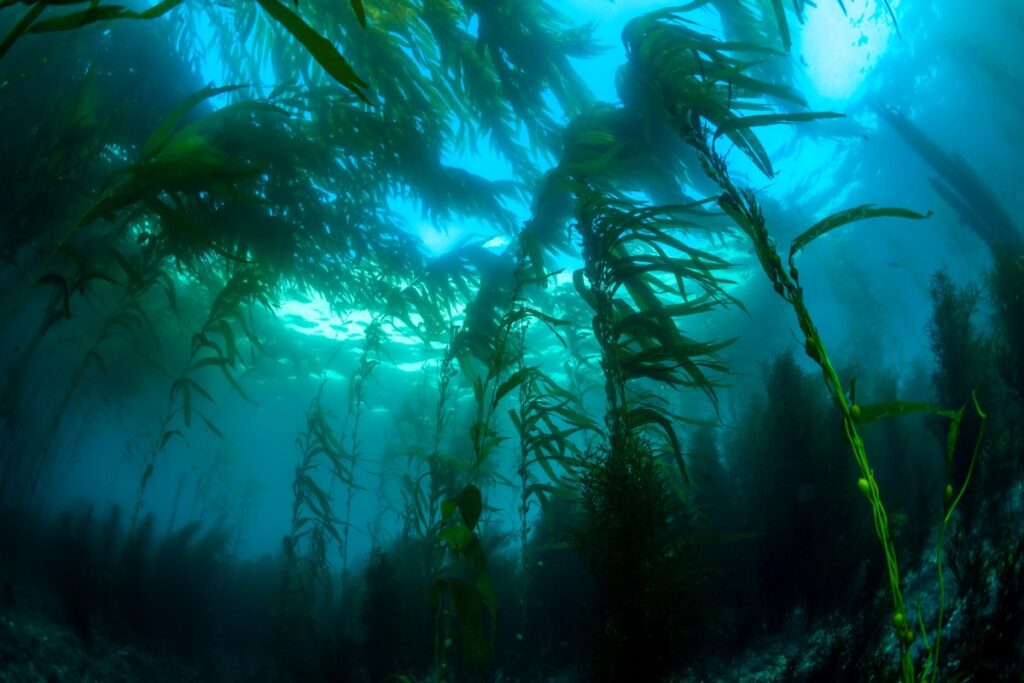
Kelp farming in America’s Golden State requires patience, as Julia Hollister reports
Getting a licence to become a kelp farmer in California seems like a great idea. But before you check your bank account, find a location for the farm and search for a catchy name; you need patience.
According to the California Department of Fish and Wildlife, to grow kelp, farmers must:
• register with the Department of Fish and Wildlife;
• obtain a state water bottom lease;
• complete an environmental review; and
• acquire permits for farming on the lease.
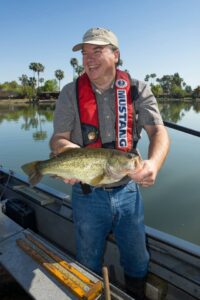
Randy Lovell
The process can take at least three and a half years and potentially up to a decade.
“There is a lot of interest in obtaining licences, but few with the stamina to get through permitting as it currently is set up,” says Randy Lovell, State Aquaculture Coordinator at the California Department of Fish and Wildlife. “Land-based seaweed culture can also be challenging due to the shortage of seawater intakes.”
Kelp is an important part of the ecosystem and kelp aquaculture can be an effective tool for extraordinary places. Both seaweed generally and kelp in particular are nutritious marine plants. Kelp contains more calcium and has a higher iodine content than most other seaweeds.
Lovell has a clearer definition: “Macroalgae comes in three groups: brown, green and red algae. All of them may technically be referred to as seaweed. The browns are often lumped together and called kelp. All kelps are seaweed, but not all seaweeds are kelp.”
Seaweed is in the algae family and kelp is essentially the largest subgroup of seaweed. Algae is a group of aquatic organisms that are mainly photosynthetic and nucleus bearing. In other words, they’re not your average plant: they lack stems, roots and other common plant characteristics. The beauty of algae is that it absorbs the atmosphere’s carbon dioxide and produces approximately 50% of oxygen here on earth.
One operation that has secured permits to operate an experimental kelp farm in federal waters off Santa Barbara, is Faroes-based Ocean Rainforest.
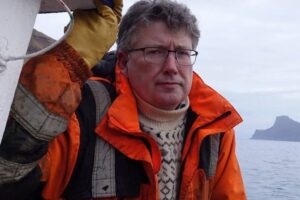
Olavur Gregersen
“Ocean Rainforest began in 2010, when we combined our knowledge of this unique ocean environment with our strong entrepreneurial spirit to cultivate seaweed,” says CEO Olavur Gregersen. “We started growing and harvesting the same species of wild seaweeds that formed part of our ancestors’ diets over a thousand years ago, because we wanted to have a positive impact on people and the environment.”
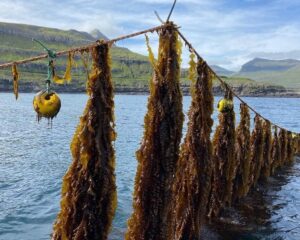
Ocean Rainforest kelp, Faroes
Gregersen adds: “The inbuilt focus on research and innovation enabled us to develop world-class cultivation methods, making us Europe’s leading seaweed cultivator and a pioneer in our industry. Our small team shares the same values of passion, teamwork and pioneering, and through a diverse set of skills and years of combined experience, we continue to explore the potential of this versatile sea plant and meet growing market demand.”
Green potential
Why is kelp so important to aquaculture? California Sea Grant – a collaboration between the National Oceanic and Atmospheric Administration, the State of California and universities across the state – has some answers.
People began collecting and eating seaweeds in the Americas more than 14,000 years ago, though in modern times, these species have become associated with Asian cuisines. Seaweed cultivation is a more recent phenomenon: as late as the 1950s, nearly all the world’s supply of seaweed was wild-collected. In the 1960s, large-scale commercial production kicked off in Asia, where the industry grew rapidly.
Gordon Drysdale, Chief Chef at popular Scoma’s restaurant on San Francisco’s Fisherman’s Wharf, believes seaweed has potential to play a bigger part in Western cuisine – if consumers could be enticed to try it.
“I’m disappointed that we don’t have as adventurous a clientele as I would like. I think the idea of a salad made with various seaweeds would be interesting and appropriate,” he says.
Drysdale adds: “The seaweed in our oyster plates is rockweed, referred to colloquially as lobster weed. It is common along the coast of Maine and is used to pack lobsters shipped from the East Coast. It is not really edible, at least not raw.
“However! I am excited about the myriad uses that are showing up not just as food sources (kombu, nori, dulse, etc), but most recently I shared with my wife my desire for a sweater I saw online made from seaweed.”
There are dozens of edible seaweeds out there, although they are much more present in, for instance, Japan and Korea than the States. Americans – and Europeans – are probably most familiar with nori, the sheets of toasted seaweed used in sushi restaurants.
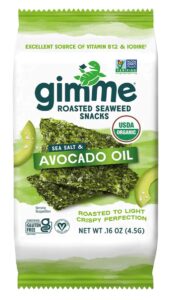
Gimme Sea Salt and
Avocado snack
Among the seaweed-based brands being marketed to US consumers is the Gimme brand of seaweed snacks and sheets, featuring flavours such as sea salt and avocado oil, toasted sesame and wasabi.
A panel at the recent Seaweed Festival in San Diego, on starting a seaweed farm in California, drew a large and interested crowd. According to one of the panellists and organisers of the event, the seaweed farming panel tends to be one of the most popular events.
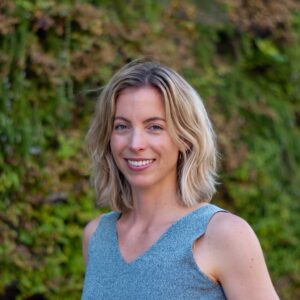
Lauren Linsmayer
Panel facilitator Lauren Linsmayer said her organisation, California Ocean Science Trust, is not necessarily advocating for people to start a kelp farm, however.
She explains: “My role was to facilitate the conversation. Our organisation’s role is to examine the science needs and knowledge gaps for the state in support of state policy and regulation development. The goal of the panel was to share with the audience the state of seaweed cultivation in California and information about the growing interest in seaweed farming.”
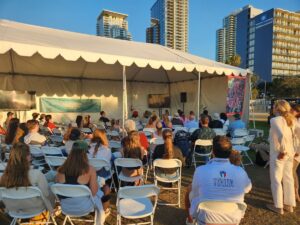
Seaweed Festival, San Diego
The panel consisted of seaweed aquaculture experts and practitioners representing industry, state government and local authorities: Randy Lovell (California Department of Fish and Wildlife), Natalie Arroyo (Humboldt County), Leslie Booher (Sunken Seaweed), Paula Sylvia (Port of San Diego) and Eliza Harrison (Ocean Rainforest).
Overall, the panel discussion illuminated growing interest in seaweed farming and different market opportunities, contrasted the perspective and experience of a small-scale nearshore farm (Sunken Seaweed) compared to a larger-scale offshore farm (Ocean Rainforest).
The panel covered a range of topics regarding seaweed farming in California, including reasons why people are interested in farming seaweed, on-the-ground experience in the Port of San Diego and Humboldt Bay, important factors to consider when deciding where to site a seaweed farm and some of the key operational and business planning needs.
Panellists discussed some of the reasons why people are interested in seaweed farming. There are many potential applications of cultivating seaweed, including for human consumption, medicines and cosmetics, feedstock for animals to reduce methane emissions and as a biofuel source.
“There’s a growing body of science showing that farming seaweed can be net beneficial to the environment and lead to restorative, regenerative and conservation outcomes when done responsibly,” Linsmayer said. “We need to ensure that science is serving as a guidepost for the seaweed farming industry and that seaweed farming is being done responsibly within a science-informed state regulatory framework.”

